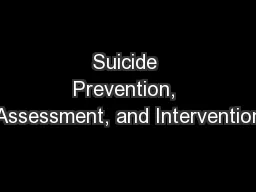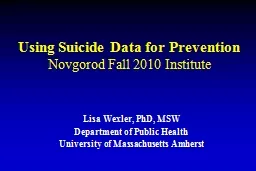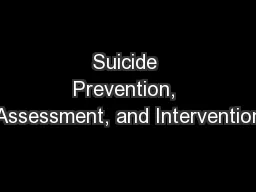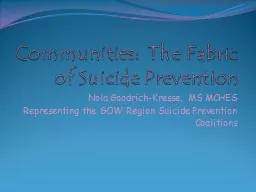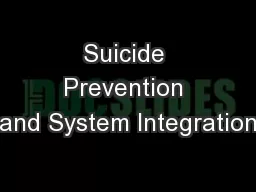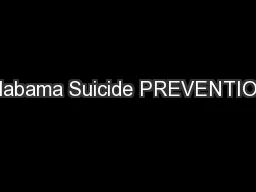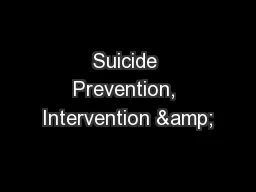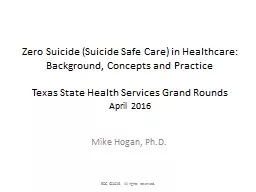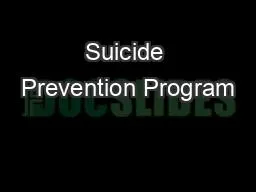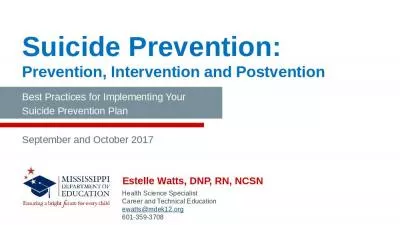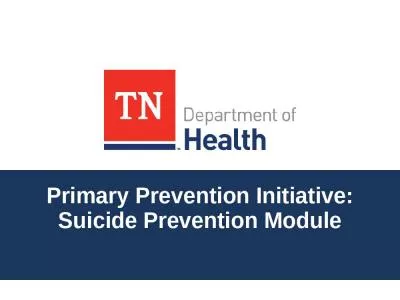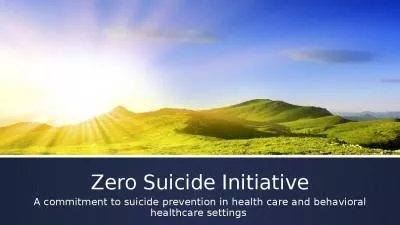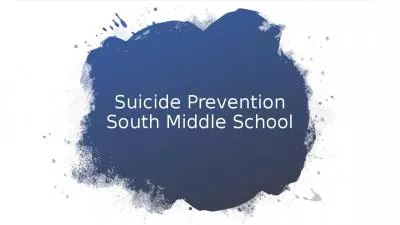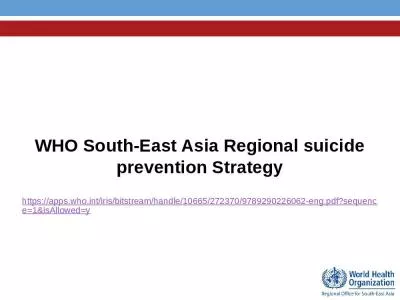PPT-Suicide Prevention, Assessment, and Intervention
Author : luanne-stotts | Published Date : 2016-07-03
The Role of a First Responder Lisa Schwartz LSW and Kathleen Kowalski LCSW Suicide Prevention Coordinators Erie VAMC 8148602038 Objectives 1 Identify the mental
Presentation Embed Code
Download Presentation
Download Presentation The PPT/PDF document "Suicide Prevention, Assessment, and Inte..." is the property of its rightful owner. Permission is granted to download and print the materials on this website for personal, non-commercial use only, and to display it on your personal computer provided you do not modify the materials and that you retain all copyright notices contained in the materials. By downloading content from our website, you accept the terms of this agreement.
Suicide Prevention, Assessment, and Intervention: Transcript
Download Rules Of Document
"Suicide Prevention, Assessment, and Intervention"The content belongs to its owner. You may download and print it for personal use, without modification, and keep all copyright notices. By downloading, you agree to these terms.
Related Documents

